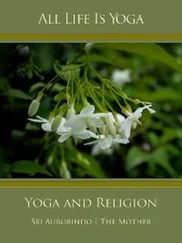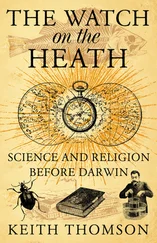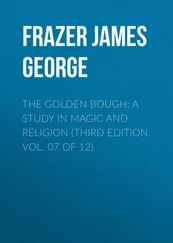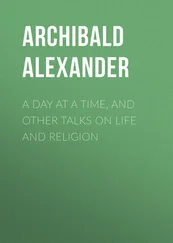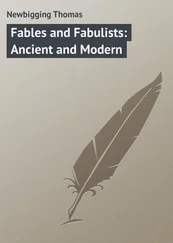Vikernes, Varg - Varg Vikernes - Sorcery and Religion in Ancient Scandinavia
Здесь есть возможность читать онлайн «Vikernes, Varg - Varg Vikernes - Sorcery and Religion in Ancient Scandinavia» весь текст электронной книги совершенно бесплатно (целиком полную версию без сокращений). В некоторых случаях можно слушать аудио, скачать через торрент в формате fb2 и присутствует краткое содержание. Жанр: Старинная литература, на английском языке. Описание произведения, (предисловие) а так же отзывы посетителей доступны на портале библиотеки ЛибКат.
- Название:Varg Vikernes - Sorcery and Religion in Ancient Scandinavia
- Автор:
- Жанр:
- Год:неизвестен
- ISBN:нет данных
- Рейтинг книги:3 / 5. Голосов: 1
-
Избранное:Добавить в избранное
- Отзывы:
-
Ваша оценка:
- 60
- 1
- 2
- 3
- 4
- 5
Varg Vikernes - Sorcery and Religion in Ancient Scandinavia: краткое содержание, описание и аннотация
Предлагаем к чтению аннотацию, описание, краткое содержание или предисловие (зависит от того, что написал сам автор книги «Varg Vikernes - Sorcery and Religion in Ancient Scandinavia»). Если вы не нашли необходимую информацию о книге — напишите в комментариях, мы постараемся отыскать её.
Varg Vikernes - Sorcery and Religion in Ancient Scandinavia — читать онлайн бесплатно полную книгу (весь текст) целиком
Ниже представлен текст книги, разбитый по страницам. Система сохранения места последней прочитанной страницы, позволяет с удобством читать онлайн бесплатно книгу «Varg Vikernes - Sorcery and Religion in Ancient Scandinavia», без необходимости каждый раз заново искать на чём Вы остановились. Поставьте закладку, и сможете в любой момент перейти на страницу, на которой закончили чтение.
Интервал:
Закладка:
Herbs gathered on the Summer Solstice was seen as particularly powerful, and one could pick pebbles from the holy sources and wells, and use them for sorcery, but they had to be picked before Sunrise. It was therefore also known as Hammer Day ("stone day"). Dew from the holy trees could be collected and used as healing potion.
The 22 ndday of Folkvangr was called the Day of Cleaning and Waking up (No. Syftesokdag ). They did the same as they did on the Day of Walking, only they – as on the Summer Solstice – did it to ward off destructive forces. This day was otherwise celebrated in the same manner as the Trono Day.
The 15 thday of Alfheimr was Harvest Sacrifice (No. Slåtteblot ), also known as Wake-Up-Day, known from Gaelic as the festival of Lugh (“light”). The day marked the beginning of harvest. Before harvest could begin the grain spirit was killed and burned, or it was – in the shape of a goat made from last year's straw – cut into bits and pieces and buried in the field's four corners and in the field itself. By the time of the Bronze Age the spirit of light and grain had become a goddess and a god, Sibijo and Fraujaz, known from the Scandinavian mythology as Sif and Freyr respectively. The grain deity was still represented by a straw figure in animal form – usually a goat. In addition to this, the god was cut down with a sax, sickle or scythe in a sword dance. Finally a symbol of the god, usually a loaf of bread or (in the most ancient of times) a cone, was cut into bits and pieces and buried with the straw animal in the field/meadow. The grain spirit had to die and be buried in the ground for new grain to come. They took the first straw harvested and made a new animal of it, and stored it in a safe place for next year's Harvest Sacrifice.
The grain spirit, and later Fraujaz/Freyr was killed because this was its/his purpose; to ascend from the black Earth (Hel/Hades), to grow crops, wake up and then be cut down so that man could bake bread.
The 14 thand 15 thday of Glaðsheimr was called Livestock Weekend. The cattle was brought home from the pasture on the 14 th. The 15 thwas known as Pack Saddle Saturday, because after having brought the cattle home from the pasture on the 14 ththe home was all of a sudden full of pack animals. In Ancient Scandinavia they lived in long houses, and the cattle was placed in the north end of the building, so that man could benefit from the heat they generated, especially in the cold northern wind.
The 22 ndday of Þrýmheimr was the Autumnal Equinox. On this day Höðr killed Baldr again. The sorcerers, wearing a hooded dress or cloak, climbed the oak on the Autumnal Equinox and cut down the mistletoe. They did it because they needed the powerful bough for their sorcery. The religious men (i. e. those who believed in the deities) tried to stop them, but always failed (or why else would winter come anyway?). The Autumnal Equinox was followed by a lent intended to show how sad everyone was, because of the loss of Baldr and his wife. It was forbidden to sing or play music for as long as the lent lasted (until Winter Night). The day also marked the end of harvest. All berries, fruit, corn and other foodstuff were safely indoors by now. To celebrate this they all wore a wreath made from the last straw harvested.
The 1 stSunday after the 1 stfull Moon after the Autumnal Equinox was the Winter Night. This was the day the oak spirit, and later Baldr, began his journey to the realm of the dead. It was celebrated like a funeral of the Sun, and we know the religious contents of this funeral from the myth about Baldr's burial. Baldr was sent on a visit to Hel in a boat, because the Sunset was seen in the sea in the west. Small rowing boats or sailing boats were loaded with firewood and were set alight, making it look as if the Sun itself was aboard. They then sent the burning boat out to the sea or down a river, to make it cross the sea/river of forgetfulness and enter Hel.
The final Saturday of the year, the 28 thday of Ýdalir, was called Reflection Day, and was in a sense just like any other Saturday, except that you had to wash and clean yourself and your home particularly well this day. You should think about what had happened the last year, and clean your mind too, so that you could start the next year clean and ready for new tasks.
3.0 The Divine Secrets
3.1 The Runes
Óðinn hanged himself in the tree of sacrifice and hung there for nine nights before he fell down and picked up the runes. He learnt in the same process nine magic songs from Bölþorn, the mistletoe, and drank the mead that taught him the art of poetry. The belief that the deity/man visiting Hel learnt something special in the realm of the dead was very strong. We see the same from our fairy tales, where a person travels to a special place and learns or becomes something special. In the fairy tale about Mother Holle (i. e. Hel) the main character is herself turned into or rather covered in gold. The prince kissing Sleeping Beauty (No. Tornerose , “thorn-rose”) also learns something special, because the thorn is a symbol of Bölþorn, the mistletoe, and the rose an ancient symbol of love, intimacy and secrecy (as seen in the Latin proverb sub rosa ), associated with Freyja. We see the same reverence for the secret knowledge in the Greek mystery religions, that one acquired in the mystery chamber. They brought different object with them inside, and were allowed to see and sometimes participate in religious plays. In these plays the deities (i. e. masked priestesses and priests impersonating deities) gave the audience a feeling of having learned something important, described by the Romans as mysterium tremendum, facinans et augustum ; the solemn that brings forth tears and trembling.
The word rune translates as “secret knowledge” or just “secret”, and the runes are most often identified as characters on par with the Latin alphabet. Originally they were sacred symbols intended to help the sorcerers memorize their sacred songs. We believe the runes date from no earlier than the 2 ndcentury, but we can still use them to reveal much older secrets, because the runes are based on more complex Bronze Age and even Stone Age symbols.
The secrets of the runes were only known by the sorcerers and the deities who travelled to the realm of the dead. By studying the runes we can find out exactly what it was they learnt in the burial mounds, and what made them able to rule their societies as queens and kings for so long.
The rune-row consisted of 24 runes divided into three groups of eight: Freyr's group, Hagall's group and Týr's group.
3.2 Freyr's Group of eight
1. Fehu means "cattle" and is connected to Auðhumbla ("silence", "weak sound"), that came about by the entrance of the burial mound, when the Sun beams (from the world of fire) met the cold darkness inside the burial mound (the world of fog). This was the cow/animal that was sacrificed on the burial mound when the sorcerers were to travel to the realm of the dead to bring back the power of the Sun. The rune is a picture of the horns of a cow, and represents cattle, possessions and material wealth.
2. Uruz means "proto-ox" and is connected to Ymir ("sound", "howling", "crying"). In the Bronze Age in Scandinavia they used lures to break the silence after they had opened up the burial mounds on the New Year's Eve. They later used the lures to summon the deities to the burial mounds, to announce that the gate to Hel was open. The lures were after this dismantled and buried, and thus they created the world between all worlds, Miðgarðr, every year from the body of Ymir. The rune is a picture of an ox without horns, because they have been taken from him and have been used to build the world, and represents drizzle, strength, health and the well-being of the body.
Читать дальшеИнтервал:
Закладка:
Похожие книги на «Varg Vikernes - Sorcery and Religion in Ancient Scandinavia»
Представляем Вашему вниманию похожие книги на «Varg Vikernes - Sorcery and Religion in Ancient Scandinavia» списком для выбора. Мы отобрали схожую по названию и смыслу литературу в надежде предоставить читателям больше вариантов отыскать новые, интересные, ещё непрочитанные произведения.
Обсуждение, отзывы о книге «Varg Vikernes - Sorcery and Religion in Ancient Scandinavia» и просто собственные мнения читателей. Оставьте ваши комментарии, напишите, что Вы думаете о произведении, его смысле или главных героях. Укажите что конкретно понравилось, а что нет, и почему Вы так считаете.

